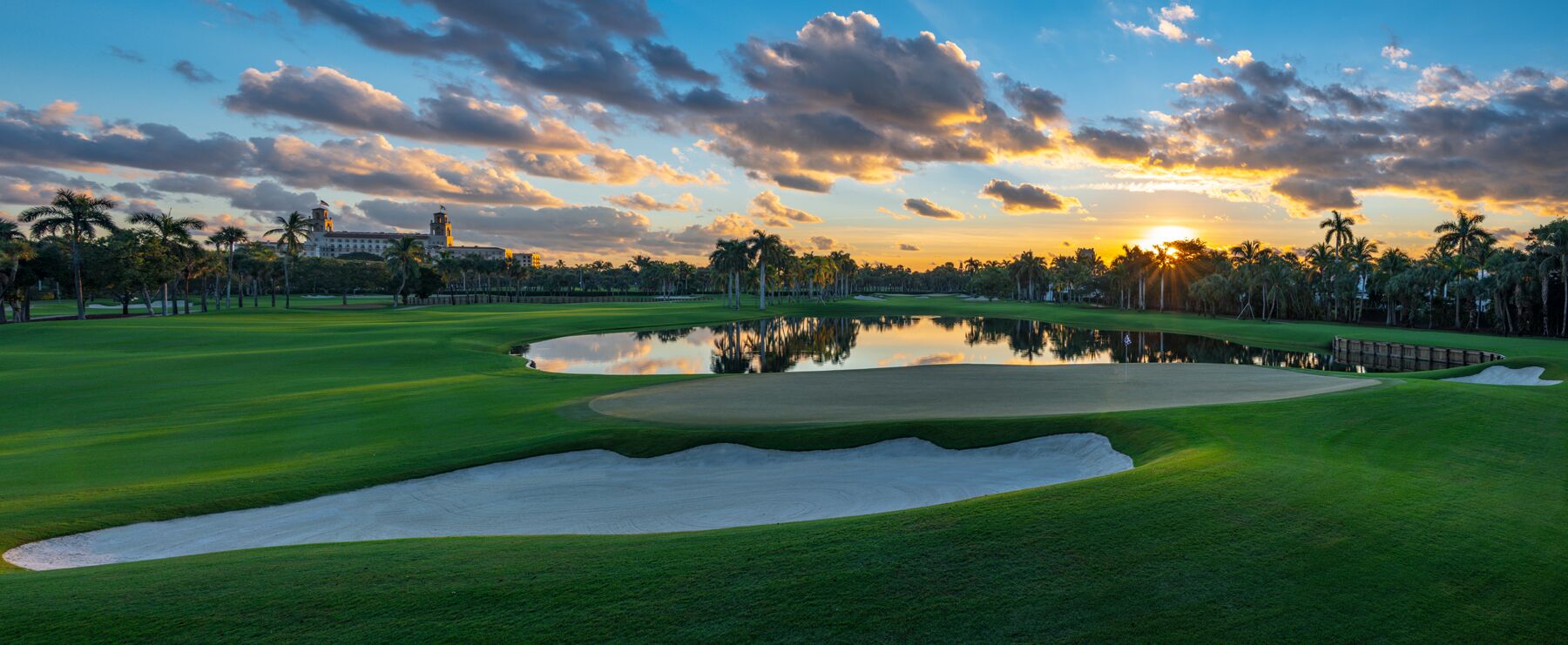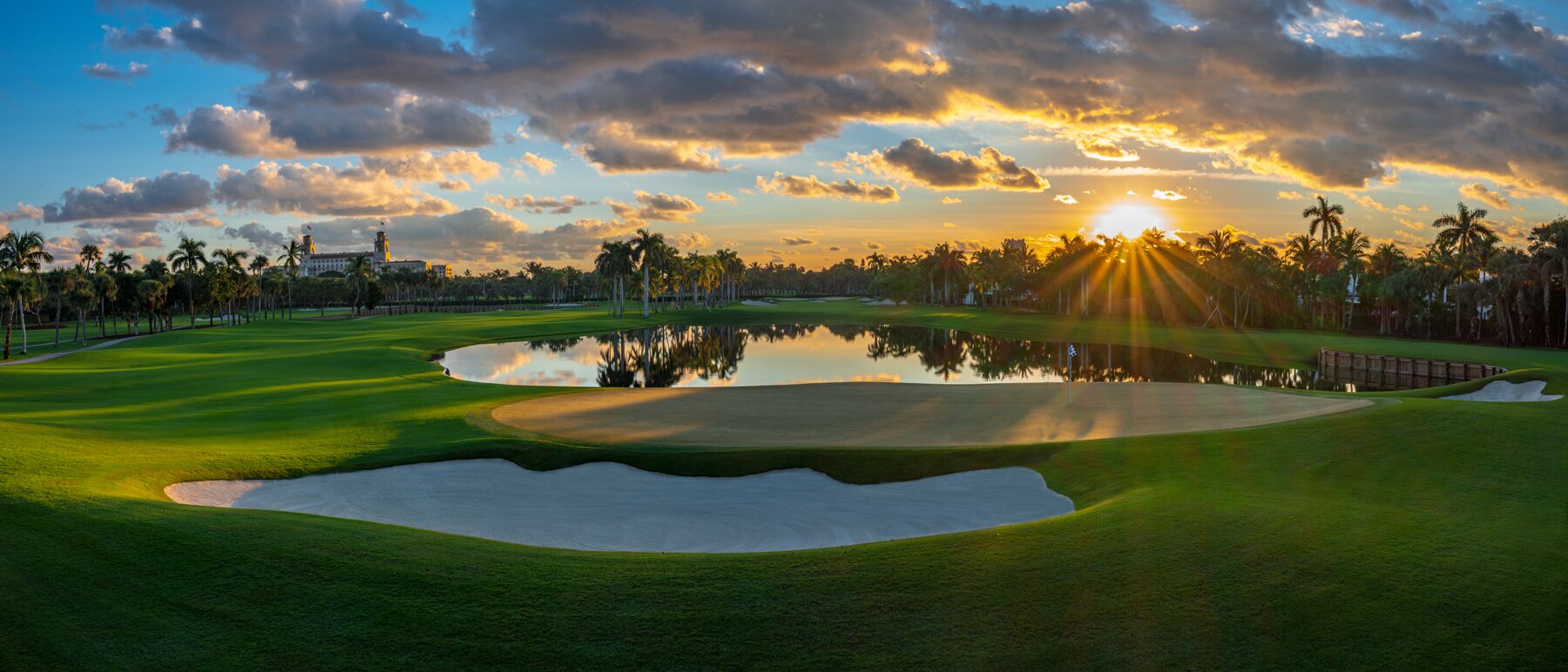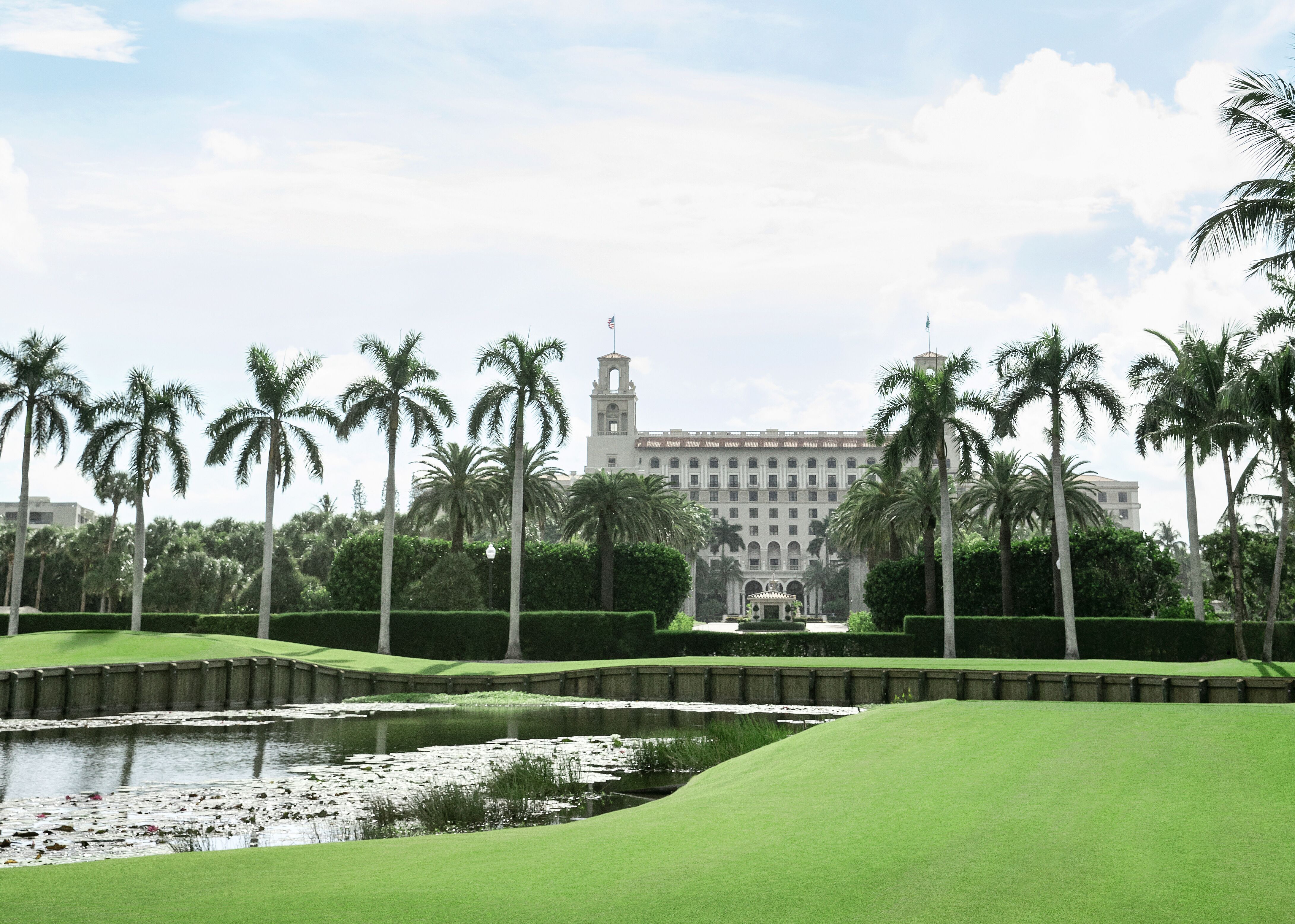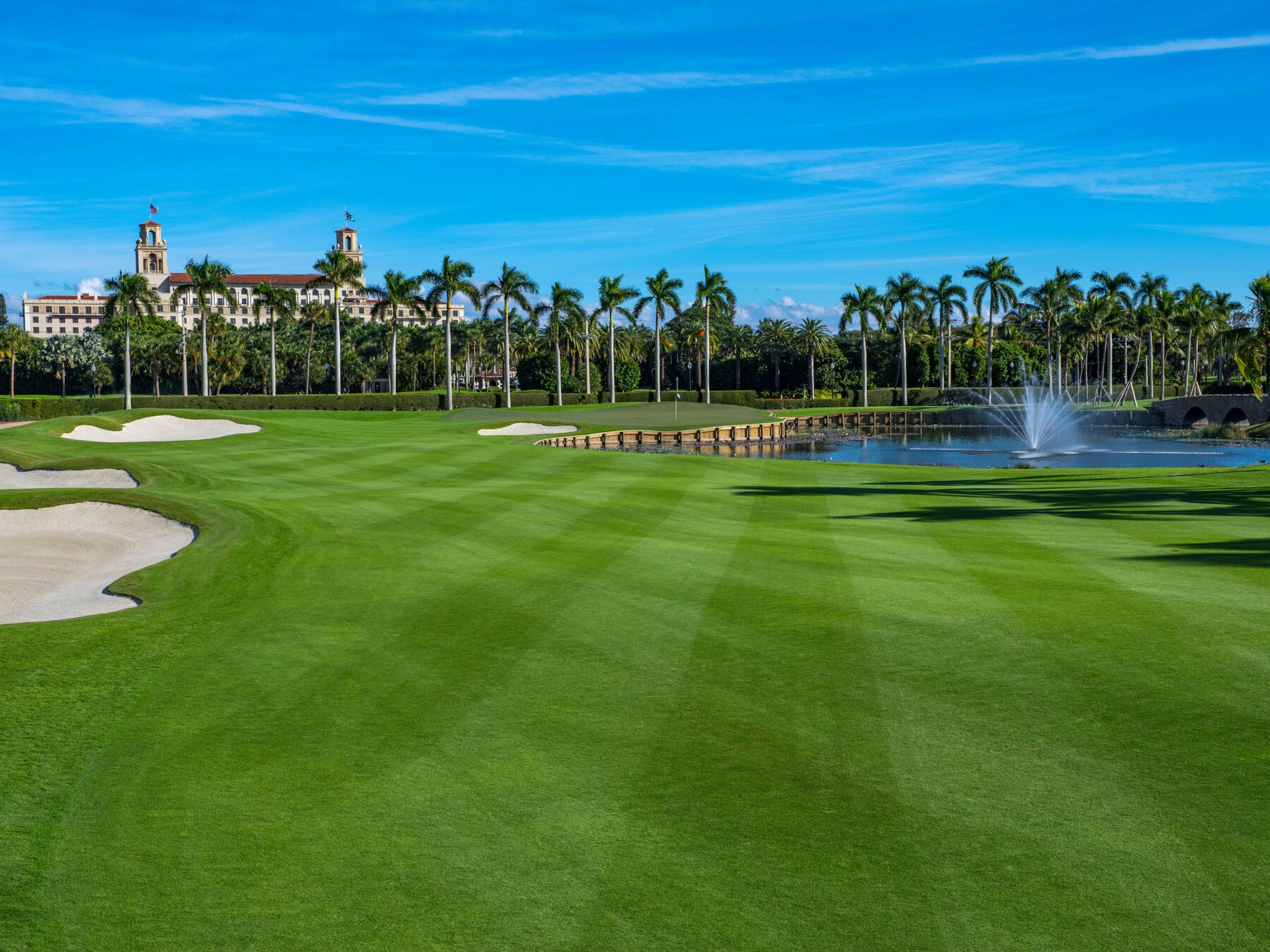THE OCEAN COURSE: FLORIDA’S OLDEST & MOST BEAUTIFUL
By Mike May
If there’s ever a golf course that requires more brains than brawn to play, it’s the Ocean Course (www.thebreakers.com; 877-724-3188) at The Breakers in Palm Beach, Florida. As the course’s website notes, “The Breakers is the envy of the golf world.” Not many golf courses can confidently make such a statement. But, The Breakers and its Ocean Course can.

Success at the Ocean Course is often achieved by those who use their mind as much as they do their muscles. It’s also important to successfully hit a number of low and controlled shots so that your ball is not adversely affected by the ever-present winds off the adjacent Atlantic Ocean.
The Ocean Course at the Breakers (One South County Road, Palm Beach, Florida), the oldest 18-hole golf course in Florida, was designed by Scotsman Alexander Findlay. The course actually opened for play in 1897 and was also the first golf course in the U.S. that English golfing legend/six-time British Open champion Harry Vardon played when he first arrived in the U.S. on February 22, 1900. By the way, Vardon played 36 holes that day and then won his debut in the U.S. Open later that year at the Chicago Golf Club.

When you step foot on the Ocean Course, it’s quite clear that the superintendent and his grounds crew are as concerned about maximizing the beauty of this par-70 layout as they are maintaining the top-notch quality of the golf course. This course – a mere 5,778 yards from the back tees — is very appealing to the eye and is always in the best shape possible, whether it’s January or June.
Thanks to the efforts of golf course architect Rees Jones, the course has just received a remodel and is in tip-top shape. The mission was to balance preservation while incorporating modernization. The mission was accomplished.

According to Jones, “every hole has a different little twist and different set of details.” One of Jones’ goals was to remove much of the foliage that surrounded the course which was obstructing sightlines of other parts of the course. It has made a big positive difference in how the course looks and plays. Because the sightlines have been enhanced in all directions, you can actually see the buildings, homes and structures in that part of Palm Beach. Despite the fact that the course is private, it is not an exclusive enclave, as it is a visible and vibrant part of the greater Palm Beach community. Every year, the Ocean Course hosts fundraising golf tournaments which provide a financial stimulus for local charities.

Jones’ remodel also showcases all new salt-tolerant grass for the tees, fairways and roughs. The green complexes feature expanded undulations. The fairways have been contoured. The wooden bulkheads have a contemporary look. The native landscaping has been enhanced. And, the reverse-osmosis irrigation system has been upgraded. Another aspect of the course that Jones has added is a ‘dogear’ on each green which gives you a backstop to aim for in order to bring your approach shot a little closer to the flagstick.
The remodel by Jones is the first major remodel since Brian Silva’s redesign efforts in 2000.
Both Silva and Jones did a splendid job. Findlay would agree if he was alive today.

By restoring a more classic layout and emphasizing the nuanced character of each hole, the Ocean Course will reward finesse more than power with a layout that exhibits varying degrees of risk, and one that is playable to all golfers.
The raised tees are flat, the fairways are very well maintained, the rough is playable, the bunkers are raked with meticulous detail, and the greens are fair and true, but not too fast. Without the surrounding flowers and foliage, the course would still be as fun to play for a PGA Tour pro as it would be for a high handicapper. With the many flowering shrubs, bushes, and palm trees which surround the fairways, tees, and greens, it’s one of the most visually appealing golf courses in America and a true delight to play. There are also six lakes and 56 sand- and grass-faced bunkers that add to the course’s subtle degree of difficulty.
When you play the Ocean Course, you will walk along the fairways of golfing history. Many of the golf’s greatest names have played the Ocean Course at The Breakers, beginning with Vardon back in 1900. The course record on the original course was set by Jack Nicklaus who shot a 59 back in the 1970s. Since the course was reconfigured in 2000 by Brian Silva, the lowest score is a 62 by Todd Sapere, who was one of the Ocean Course teaching professionals at the time.
From an aesthetic point of view, the Ocean Course has 18 signature holes, in my opinion. Every hole can be a portrait on a postcard. From a golfing point of view, all 18 holes also have character, charm, and backbone, especially the par-four 6th hole, where the green and the fairway are separated by a lake which must be negotiated on your approach. And, the last three holes are three of the best finishing holes in south Florida. The 16th is a long par three to a slightly raised green. When the hole is played into the wind with a back-right pin position, it plays like a short par four. The 17th is the course’s only par five. Even though it’s less than 500 yards from the back tees, it bends around the corner, going right-to-left from the tee. Keeping the ball in play off the tee and avoiding the big, elongated fairway bunker is the key at the 17th. The 18th is a left-to-right par four where your approach must fly over a lake and a greenside bunker, both of which protect the entrance to the green.
The Breakers is also home to the renovated and expanded John Webster Golf Academy, which provides year-round, player-centered golf instruction; state-of-the-art learning centers; personalized fitness evaluations; and custom club fittings. The Breakers Ocean Clubhouse. reminiscent of a grand Floridian estate, is a 32,000-square-foot golf and tennis clubhouse which features The Sports Pro Shop, luxurious locker rooms and the Flagler Steakhouse, a fresh take on the classic American chophouse with a fully climate-controlled terrace that offers spectacular views of the fairways and calm ocean breezes.
It’s fair to say that The Breakers spares no expense in keeping this course in terrific shape – 365 days a year. One of the ways in which the Ocean Course stays in great shape is that a local rule gives golfers free relief from all flowered areas as well as the tropical plantings. It’s fair to say that The Breakers doesn’t want you trying to save par from the petunias or trying to get up & down from the impatience!

Whether you play the Ocean Course in the spring, summer, fall or winter, you will always benefit from your close proximity to the Atlantic Ocean which provides a steady and refreshing breeze off the nearby ocean. Again, to thrive at this tropical delight, you’ll need more brains than brawn to play well on this seaside site.

